

EN ESPAÑOL
Mulegé Flora Project

MFP Home | Locations | Geomorphic Formations | Species
Supplementary Material
This page contains supplementary material to: AN ANNOTATED CHECKLIST OF THE VASCULAR PLANTS OF MULEGÉ, BAJA CALIFORNIA, MEXICO. VALOV, D. (2019 pending). Madroño. It also includes the images that originally appeared in the printed article.
Below are the images that are found in the printed version. Additional images of locations, geomorphic formations and selected plant species can be found on these pages. Click on any image for an enlarged view. All images by the author.
From the Article
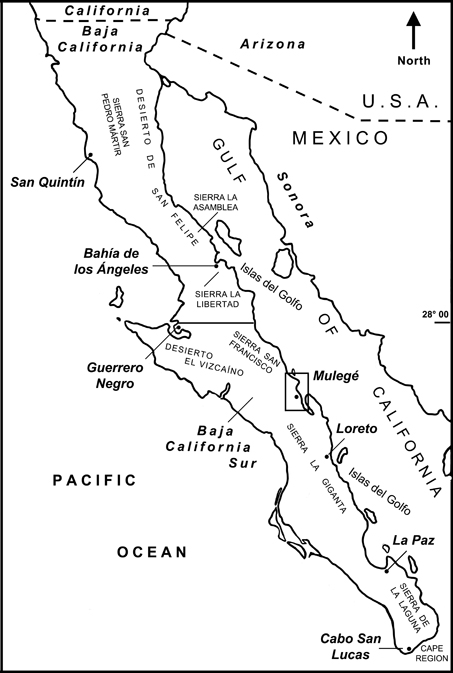
Fig. 1. Regional map of the Baja California peninsula. The small rectangle indicates the location of the study area.
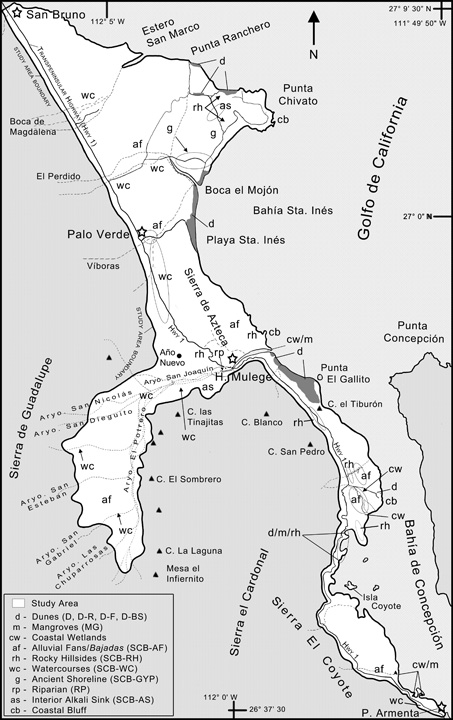
Fig. 2. Map of the study area showing major collection locations by geomorphic formation. Key corresponds to plant associations described in the text and used in the checklist. General coordinates for named locations in the text and on this map can be found in Appendix III.
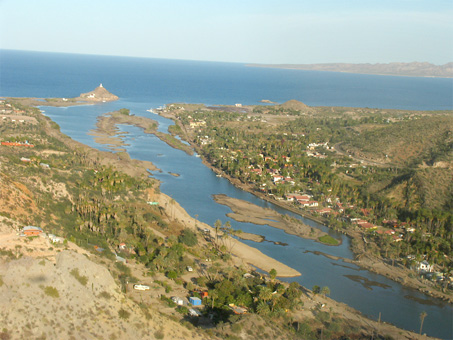
Fig. 3. A 2010 aerial view of the mouth of the Mulegé estuary. Mangroves used to line the shores of the estuary and the gravel bars in the middle of the channel as recently as 2006, but now only a fraction of these remain.
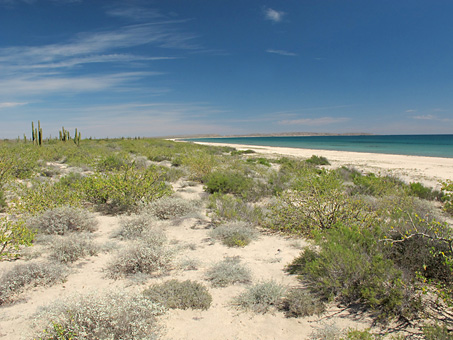
Fig. 5. Looking north along Santa Inés beach and bay, with the Punta Chivato peninsula in the distance.
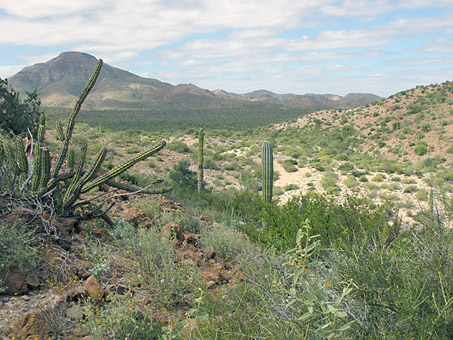
Fig. 7. View westward of a broad alluvial fan and sandy arroyo from a rocky hillside at Punta Sueños. Photo from late 2012, a few months after heavy rainfall from Tropical Storm Paul.

Fig. 4. View of the Mulegé valley, looking towards the mountain ranges that form the west side of the valley.
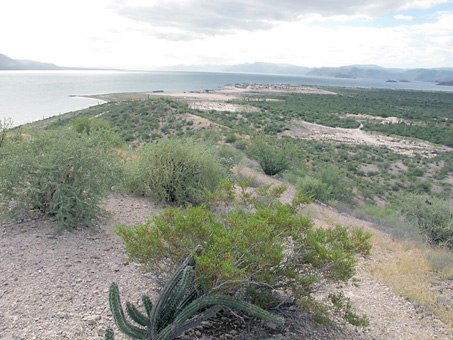
Fig. 6. View southward into Bahía Concepción from a bluff near Punta Sueños, with the western shore on the right and the Concepción peninsula on the left.

Fig 8. Secondary gypsiferous deposits at Punta Chivato. Dominant species include Euphorbia lomelii (foreground), Euphorbia ceroderma (middle) and Fouquieria diguetii (right and center rear).
The following plants are endemic to the peninsula, except for the halophytes in the coastal wetland.
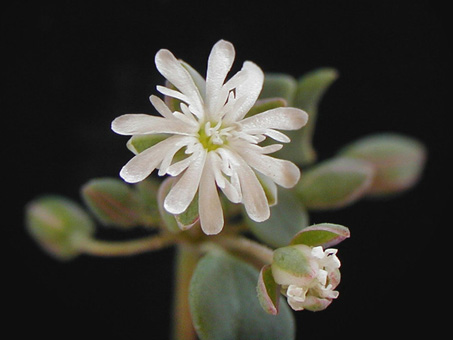
Fig 9. Drymaria holosteoides var. holosteoides flower and buds at 10x. Flowers c. 1 cm D.
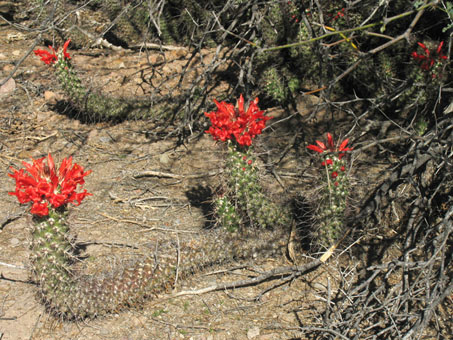
Fig 11. Creeping stems topped with hummingbird-pollinated flowers of Cochemiea poselgeri, here blooming profusely in December.
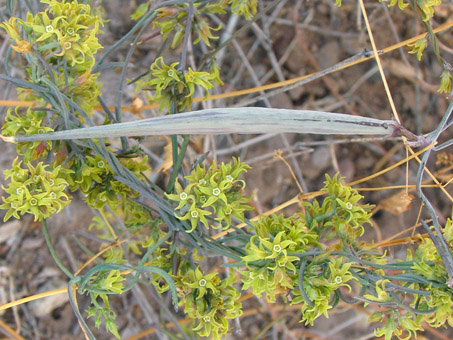
Fig 13. The gray-green, entwining stems of Pattalias palmeri are thready and have a milky latex sap with an onion-like odor. Flowers are c. 1 cm D.
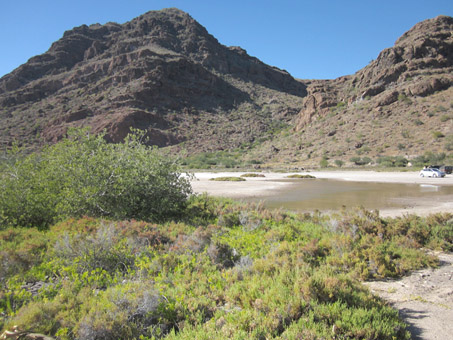
Fig 10. Coastal wetland (mangroves, salt marsh and salt pan) just behind the beach strand at Playa Burro, with the volcanic crags of the western escarpment of Bahía Concepción looming above.
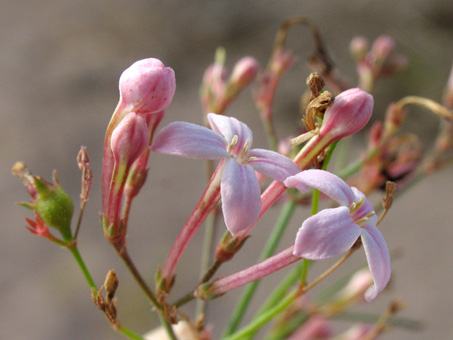
Fig 12. Stenotis brevipes is a small to medium cespitose shrub. Corolla limb 10-12 mm D.
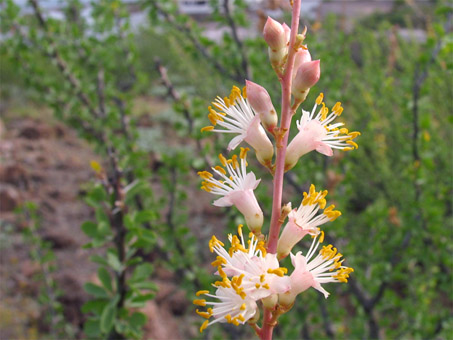
Fig 14. Fouquieria burragei flowers. This is a pink-tinged version, but plants with solid white flowers are more common.
Below are additional images that give a broad overview of the area, from the northern limits of the study area near San Bruno to the southern limit at Playa Armenta, Bahía Concepción, and the eastern limits in Punta Chivato to the western limits in the Mulegé valley.
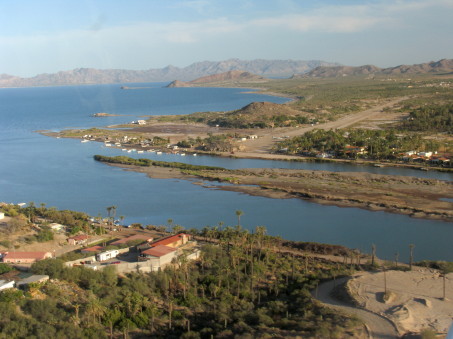
A 2010 aerial view of the mouth of the Mulegé estuary and El Gallito beach and dune system to the south. Cerro Equipalito is the low hill in the middle, left of the airstrip. El Gallito is the low knob at the end of the curve of beach, with a islet just off shore. Concepción Peninsula is in the distance, with Bahía Concepción opening just south of El Gallito.

The above-ground, freshwater portion of the Mulegé River from the Mirador (lookout) behind the Mission. The date palm orchards were originally planted by the Jesuit missionaries in the late 1700s.

Hills that form the Sierra Cardonal on the south side of the river and of town. This photo is from the area known as El Rastro. A road from the neighborhood El Rebaje passes the rastro (abbatoire) and...

Looking west from near Hwy 1 just before the Las Plumas grade (that climbs through the Sierra Azteca and descends into Mulegé from the north). The many small hills leading up to Sierra Guadalupe can be seen in the distance. The dirt road leads towards Rancho Año Nuevo.

Looking east along the Mulegé arroyo and downstream into the Mulegé estuary. The Faro (lighthouse) sits atop the small rocky hill called El Sombrerito that is connected to the north shore by a spit of land that often gets washed out by floods. The majority of buildings on the right side (south side of the river) are vacation homes for foreign tourists.
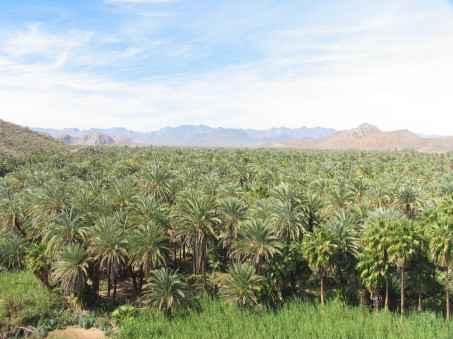
Continuing view of the palm orchard from the photo left. Mixed in with the date palms are native fan palms (Washingtonia robusta). The Sierra Guadalupe are in the distance (west). The valley continues to the left out of sight where it is backed by the Sierra Zacatecas on the west and the Sierra Coyote on the south and west.

...continues along the edge of the hills, as far as La Ventana (a window rock). An alkali sink forms part of the small valley (behind the camera). Images Nov. 2012, two months after Tropical Storm Paul.

The beach at San Bruno, the northern limit of the study area. It has very low dunes with some areas of high impact from local vehicles. Isla San Marcos is in the distance. The white patch low to the water on the right side of the island is the gypsum mine.

Gulf coast from the Dolphin Cove real estate development, looking northward across the dune field on the north side of the Punta Chivato peninsula. The mountain range in the distance is the eastern escarpment. This section, that extends from near Mulegé to at least here is known as the Sierra Guadalupe.

Beach on northern coast of Punta Chivato, where there is a small real estate development called Dolphin Cove.

Looking SE along the other small beach between Punta Cerrotito (pictured) and Punta Chivato (north, behind camera). The peninsula is of uplifted limstone with overlays of volcanics. These two beaches (this and previous photo) face E and are open to the full force of the the Gulf & wind. Dunes have been created against the cliffs in this stretch and extend beyond the tops of the cliffs, where they have also engulfed a small volcanic knob on the far right, out of frame.

Looking back at Punta Cerrotito from the spit between the mainland and Punta Cacarizo.

Punta Mezquitito (the fourth point on the Punta Chivato peninsula) as seen from Punta Cacarizo.

El Gallito beach, running southward towards the Mulegé river.

Eastward to Bahía Concepción & the Concepción peninsula from Cerro San Pedro. Playa los Lobos is between the cactus stem & small hill.

Rocky bluffs at Punta Sueños just within Bahía Concepción.

Palm palapas on narrow beach strand at Playa el Coyote.

View of Coyote beach and bay, within Bahía Concepción.

Estero San Marcos is a large estuary located between San Bruno and Punta Chivato along the Gulf coast. It is fed fresh water only in times of heavy rains on the plain behind.

Isla San Marcos as seen from the Dolphin Cove development on the north shore of Punta Chivato. What looks like pale cliffs is actually primarily the exposed excavation sites of the gypsum mine on the southern part of the island.

Looking NW along one of the two small beaches between Punta Chivato (at far right) and Punta Cerrotito (south, behind camera).

One field trip around Punta Chivato was aided by local expats who took the author on some local back roads. Here, looking south from the base of Punta Cerrotito towards Punta Cacarizo (the dark strip at center along the water's horizon, known by English-speaking residents as Hammerhead Point). The flat place just above it is the mouth of Bahía Concepción, with the Concepción peninsula on the left, and the Sierra Azteca the nearest hills on the right.

Punta Cacarizo is a mostly barren chunk of limestone. The surface rocks are heavily pockmarked. This is a view mostly southward towards Mulegé. The land in the near distance is one of the Santa Inés islands, also made of limestone and with a low profile.

Looking northward back from the beach at Punta Prieta (Mulegé), towards Punta Chivato in the the far distance with Punta Colorado the last clearly visible feature at the curve of the beach and cliffs.

View of Cerro el Gallito, looking northward from Tiburón grade. The Punta Chivato peninsula is just visible on the horizon left of El Gallito.

Playa Los Lobos, a pebbly beach near the mouth of Bahía Concepción. The Concepcion peninsula is the backdrop.

View northeastward of the bay, Punta Arena and the peninsula.

Narrow beach strand and vacation homes at Playa el Coyote.

Playa Armenta, the southernmost point within the study area.